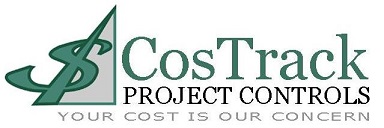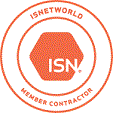Cost Analyst
Job Description and Duties
Job Description and Duties
A Cost Analyst with CosTrack Project Controls is
required to understand the functionality and use of the CosTracker
Software which provides the cornerstone of our services. It is
necessary to know how information is entered into the system, flows
through the databases and provides meaningful information to the
reports we provide and the data we supply to our clients and
contacts.
Cost Analysts need to develop an understanding of the variety
of tables into which data is entered and the information they
contain to complement a wide variety of uses ranging from Audit and
Verification Services, Reporting Services, and Data Exports from our
system to a Client Financial Services System.
A Cost Analyst will be expected to have a detailed
understanding for the process and audit side of the business and a
familiarity with the reporting aspects of our services. They must
develop an intimate understanding of the tables within which the
data is held and how to enter complete and accurate information into
the system in order to reproduce financially and contractually
accurate reports and data to our clients.
Duties:
-
Format and import client Timesheets into the system
-
Audit the time reported against the gate punches
-
Audit the client contractor labor, equipment, material and other submitted costs against the contract
-
Produce daily or weekly detail costs reports for approval and signature
-
Provide invoicing packet or reports to satisfy client company requirements to get client contractors paid
-
Differentiate between Labor, Equipment, Materials, Sub-contractor, Consumable, Third Party Rentals and other types of charges being reported by the contractor clients and be able to put the data into the correct tables within the system
-
Develop an intimate understanding of the information contained in the various tables within the system and know what information is necessary to provide comprehensive reporting functionality:
- Purchase Order Table
- Employee Table
- Classification Table
- Codes Table
- Company Table
- Company Import Table
- Time and Shift Tables -
Understand the relationships between the tables and be able to enter all the information necessary into all tables to make the cross-relational functions within the database work:
(Example: the PO, Classification, and employee must all be asigned to the same company. This information is required in three separate tables to make on meaningful and accurate Labor Report.) -
Be able to read and understand contract language and apply the terms to the information provided by the contractor clients
-
Be able to print fully audited Labor, Equipment, Material and Other Reports to the client contractors for their review and approval
-
Be able to provide fully audited, approved and signed Labor Reports to the client company for their approval and signature.
-
Be able to communicate clearly, professionally and knowledgeably with our contractor clients and company clients on a daily basis via personal contact, by phone and through e-mail.
-
Often our Cost Analysts will be called upon to provide basic reports for our company clients. They could include, but are not limited to, company reports, work order reports, purchase order reports, project reports and manpower/FTE/force reports. Each of these reports is the logical extraction of the daily contractor data entered into the system.
-
Know who to contact, or the process employed, at the client facility when items are submitted for reimbursement by the client contractors that are not a part of the contract.
-
Learn how to work within the guidelines of each client company facility to meet and their expectations in all work performed and presented.
-
A Cost Analyst should learn the differences between the various types of contracts employed by the client company facility, including time and material, lump sum, fixed fee, sub-contract pay on approval and milestone.
-
A fine understanding should be developed of the differences between open shop and union contracts and the employment strategies employed by each.




